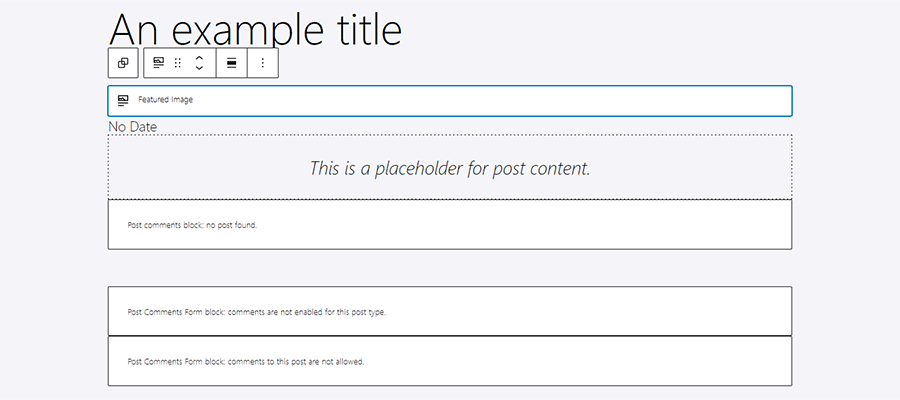Will Full Site Editing Help WordPress Themes Finally Reach Their Potential?
Marketing buzz has never been a true reflection of reality. No, the “right” drink won’t make you more desirable. A new car won’t bring your family a higher level of togetherness. And a WordPress theme can’t possibly fulfill every single need.
The myth of that last one has persisted throughout the years. Theme developers position their products as one-size-fits-all. Whether you’re a baker, a plumber, or a multinational corporation – a singular theme has you covered.
It’s easy to understand why themes have been marketed this way. WordPress powers 40% of the web and has a very broad user base. The desire to reach every corner of it is strong.
Still, the reality is often something altogether different. While a theme could theoretically be utilized for any purpose, this doesn’t mean it’s a good fit. But maybe that’s about to change.
The introduction of Full Site Editing (FSE) could be the thing that makes a “multi-purpose” theme more than just a positioning statement.
If you’re unfamiliar with WordPress Full Site Editing, you’ll want to check out our writeup on the feature. It will give you a background regarding what it does and how it might be useful for users and developers alike.
More Flexible, Less Opinionated Themes
Part of the challenge with building themes for a mass audience is balancing “opinionated” design with flexibility. Until now, that has seemed like a losing battle.
In this realm, flexibility tends to be defined as having a lot of readymade site templates. For example, a theme may come with demo websites for a construction company or an electronics retailer. But just because you throw in a few relevant stock photos and change the layout doesn’t mean it’s at all appropriate for the user’s needs. That’s more like opinion disguised as something else.
Full Site Editing brings something different to the table. Since it allows every portion of a compatible theme to be customized directly within WordPress, it could potentially redefine the role of a theme developer.
Instead of offering completely rendered designs, a theme might include an array of options for the header, footer, navigation, and content area. From there, a website owner can choose the options that best fit their needs and fill in the blanks with content.
Since block patterns have become an established part of the Gutenberg block editor, they are a natural fit for FSE themes. Theme authors can include relevant patterns and maybe even some custom blocks that enhance functionality.
Design assets like photos and icons can still be included to provide a polished look. However, they’ll be easier to swap out thanks to the block editor.

Reducing Theme Bloat
As it stands, finding a WordPress theme that doesn’t include massive amounts of code is difficult. Bulky option panels, “required” plugins, libraries, and custom templates all take up space. They also add to the maintenance burden. More code means more potential for bugs to pop up.
Because FSE is an extension of the Gutenberg experience, there’s hope that it will help themes jettison bloat. For example, many themes bundle in a page builder plugin. However, this should become unnecessary as a theme can now take advantage of the native editor.
The aforementioned block patterns and custom blocks could take the place of additional templates and plugins, respectively. This further reduces the size of a theme package and might ease maintenance requirements.
To be fair, custom blocks also tend to be placed into their own plugins. But rather than bundle a half dozen separate plugins (like we tend to see today), blocks could be combined into a single package. Even better if they’re theme-agnostic and can be used down the road with other themes.
Hopefully, FSE leads to leaner themes that are better optimized for performance.

The Big Question: Will Theme Developers Buy into FSE?
The potential of FSE seems quite large. It represents a major shift in the way we build and maintain WordPress themes.
But success will require some buy-in from theme developers. And there’s no guarantee that the larger theme shops will immediately jump on board.
Commercial themes built with Gutenberg in mind aren’t nearly as plentiful as those that rely on page builders. Then again, early versions of the block editor were clunky and constantly changing. Perhaps FSE will be the feature that pushes developers to finally embrace the new way of doing things.
The transition will take some time. Developers have a lot invested in existing products and are obligated to continue supporting them. Then there is the learning curve that comes with FSE and Gutenberg.
Once a few popular FSE-capable themes prove themselves on the market, you can expect other developers to join in the fun. Until then, we can dream about what WordPress themes can and should be. Maybe this will be a major turning point.